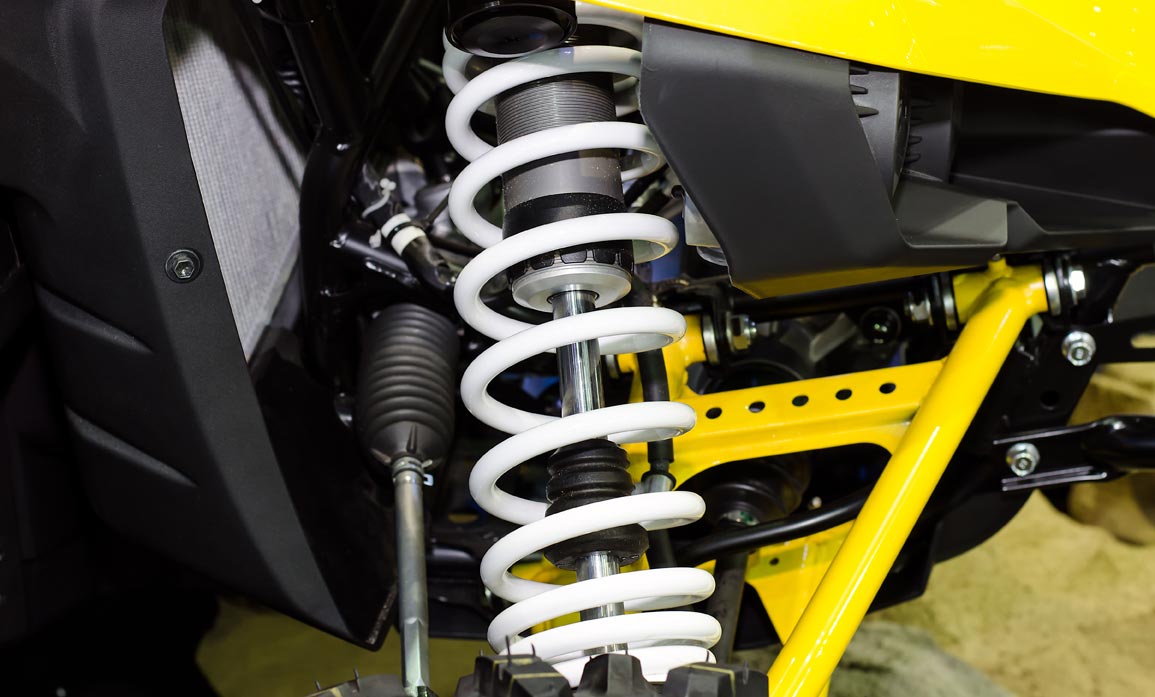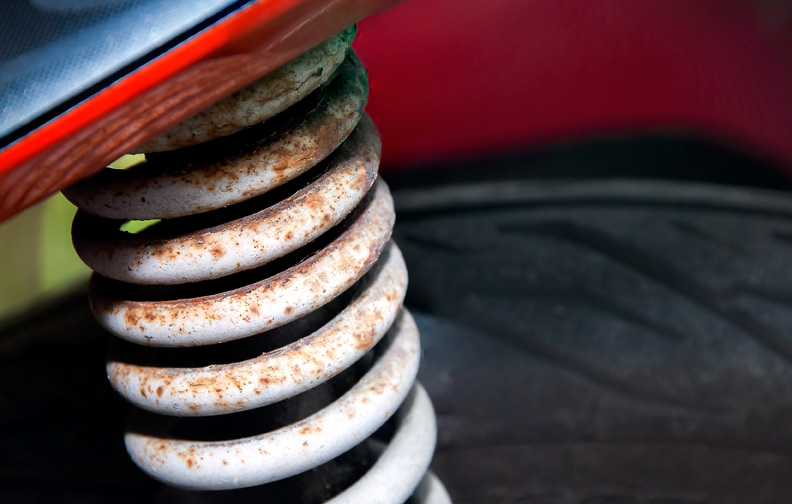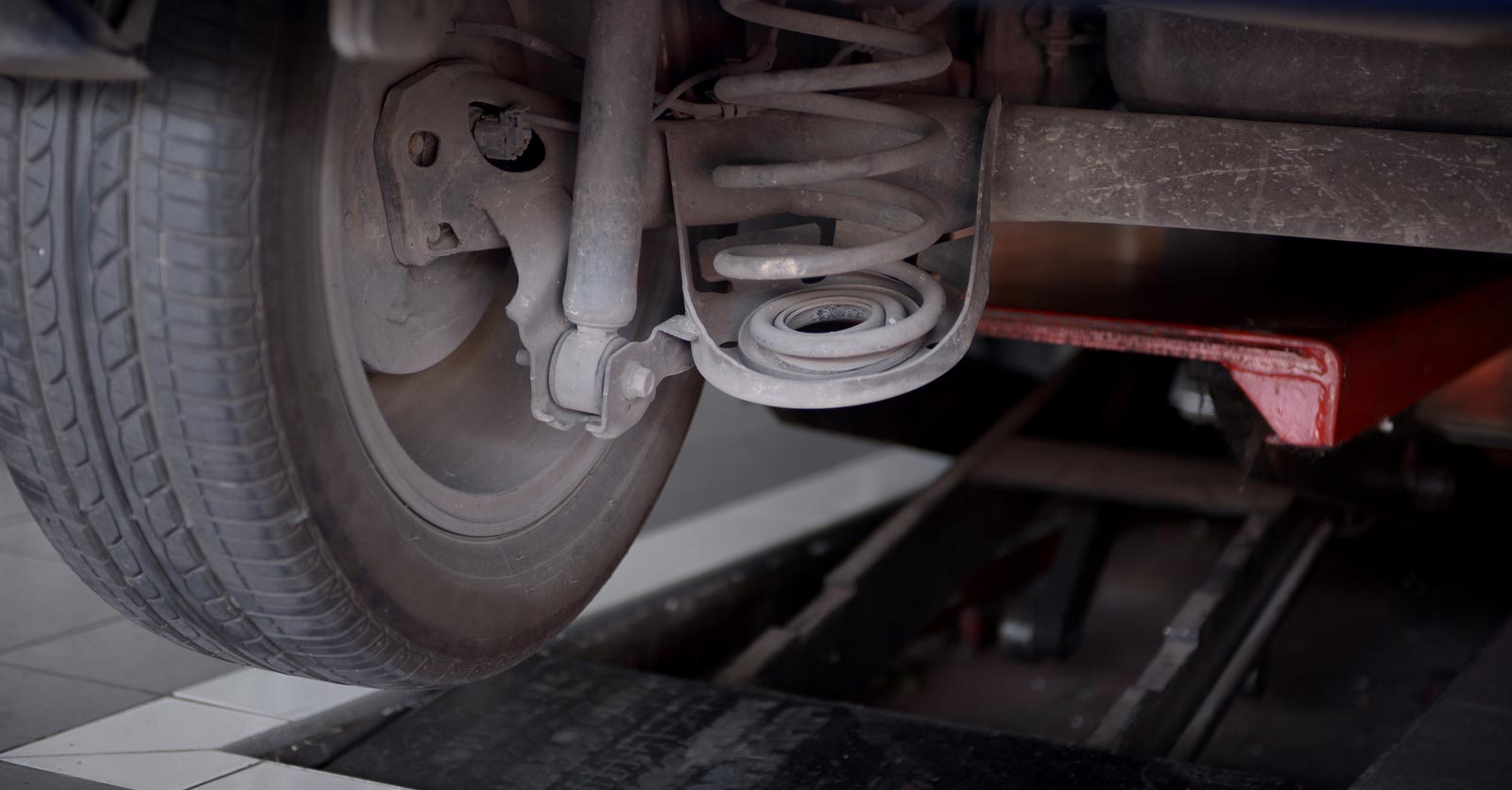SHOCK ABSORBERS & SUSPENSION
SHOCK ABSORBER & SUSPENSION REPAIRS GLASGOW
Suspension and Shock Absorbers are there to reduce the effect of traveling over rough ground, leading to improved ride quality and vehicle handling.
Suspension
While shock absorbers serve the purpose of limiting excessive suspension movement, their intended sole purpose is to damp spring oscillations. Shock absorbers use valving of oil and gasses to absorb excess energy from the springs. Spring rates are chosen by the manufacturer based on the weight of the vehicle, loaded and unloaded. Some people use shocks to modify spring rates but this is not the correct use. Along with hysteresis in the tire itself, they damp the energy stored in the motion of the unsprung weight up and down. Effective wheel bounce damping may require tuning shocks to an optimal resistance.
Spring-based shock absorbers commonly use coil springs or leaf springs, though torsion bars are used in torsional shocks as well. Ideal springs alone, however, are not shock absorbers, as springs only store and do not dissipate or absorb energy. Vehicles typically employ both hydraulic shock absorbers and springs or torsion bars. In this combination, “shock absorber” refers specifically to the hydraulic piston that absorbs and dissipates vibration.
Shock Absorbers
A shock absorber (in reality, a shock “damper”) is a mechanical or hydraulic device designed to absorb and damp shock impulses. It does this by converting the kinetic energy of the shock into another form of energy (typically heat) which is then dissipated. A shock absorber is a type of dashpot.
The shock absorbers used in most cars today are either twin-tube or mono-tube types with some variations on these themes.
Additional Services
More Than Just A Garage



Types of Shock absorbers
Basic Twin-tube shock absorbers
The Twin Tube shock absorbers are also known as “two-tube” shock absorbers. They consist of two tubes, an inner tube is called the “working tube” and an outer tube is called the “reserve tube”. At the bottom, on the inside is a compression valve or base valve. When the piston is forced up or down by bumps in the road, hydraulic fluid moves between different chambers via small holes in the piston which converts the shock energy to improve the overall comfort of your journey
Twin-tube gas charged shock absorbers
Known as a “gas cell two-tube”, this has a significant advancement over the basic twin-tube. Its overall structure is very similar to the twin-tube, but a low-pressure charge of nitrogen gas is added to the reserve tube. This causes a reduction in foaming or aeration, which is an undesirable outcome of a twin-tube shock absorbes when they overheat and fail which presents as foaming hydraulic fluid dripping out of the assembly. Twin-tube gas charged shock absorbers are in the majority of modern cars.
Mono-tube shock absorbers
As its name implies mono-tube shock absorbers, comes in a coil over format and consists of only one tube, the pressure tube. The two pistons are in mono-tube shock absorbers are called the working piston and the dividing piston, and they move in relative synchronous inside the pressure tube in response to changes in road smoothness. The two pistons also completely separate the shock’s fluid and gas components. The mono-tube shock absorber makes it more difficult to mount in passenger cars designed for twin-tube shocks.



